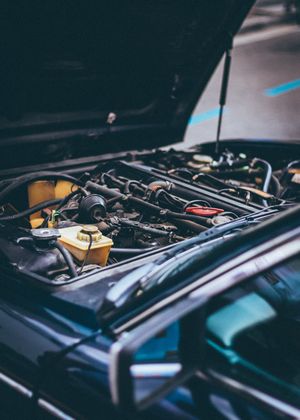|
By accessing or using The Crittenden Automotive Library™/CarsAndRacingStuff.com, you signify your agreement with the Terms of Use on our Legal Information page. Our Privacy Policy is also available there. |

Don't Let Water Damage Bog Down Your Ride
|
|---|
|
|
Don't Let Water Damage Bog Down Your Ride
Lucy Wyndham
14 February 2019
 Photo by George Sultan Photo by George Sultan
|
Flood damage
costs almost $2 billion dollars per year in the United States. This is partly due to the fact that many regions have experienced more rain, which causes floods that damage a large number of vehicles. Many people assume that once their car has water damage, there is no way to restore it to its original condition. While in some cases this may be true, there are still practical steps one can take to minimize the effect of water damage, which can help your wallet, and
keep your insurance costs low. Following these steps can help you get back on the road shortly.
Getting Rid Of Mold
Most cars that receive extensive water damage end up with a mold problem. This is not an ideal situation, but with some elbow grease, there are ways to remove the mold in a vehicle. Simply leaving the mold is not an option, and the bacteria can
cause a number of health issues, especially in children. First, identify where the mold is in your car’s interior. It’s not uncommon for it to be most prevalent on carpeted floors, or places where the water pooled the most. Take the time to
safely remove areas where mold has grown. Replacing this with fresh, dry carpeting will cost some money, but will return your car to a fresh, healthy vehicle to drive.
Don’t Forget To Check Under The Hood
In some situations of major flooding, even the car’s engine can be damaged by water. Before you try to drive, pop the hood and have a look. Some
key signs of water damage include finding water droplets in your oil, and malfunctioning electrical components. Trying to operate a vehicle with engine water damage can potentially be dangerous, so make sure to consult with a professional mechanic before making any major repairs. In some areas that are prone to flooding, there are mechanics who specialize in
reducing the effect of water damage, so it’s best to leave it in the hands of an expert if the water damage seems to be significant.
Preventative Measures
In order to avoid the headache of dealing with a waterlogged car, you can take steps to avoid the problem in the first place. Some
simple tips you can implement include parking on high ground if you know there’s a chance of rain, water-sealing the car, and disconnecting any electrical components like a battery. You will be happy to return to your car after serious flooding to find it dry, and in good working order if you take the proper preventative measures beforehand.
Although it’s never a fun thing to deal with, preventing and fixing a water-damaged car can actually help bring new life into the vehicle. Interior water damage usually requires new carpeting and dash components, which provide car owners a great opportunity to upgrade outdated specs. Engine damage can prove to be costly, but also give you the chance to replace damaged parts with more efficient, higher performing ones. However, the best move to make is to take the required steps necessary to protect your car in the event that flooding or water damage might occur. It’s usually better to be safe than sorry when it comes to caring for your vehicle, and even more so when dealing with pesky water damage.

















 Photo by George Sultan
Photo by George Sultan
